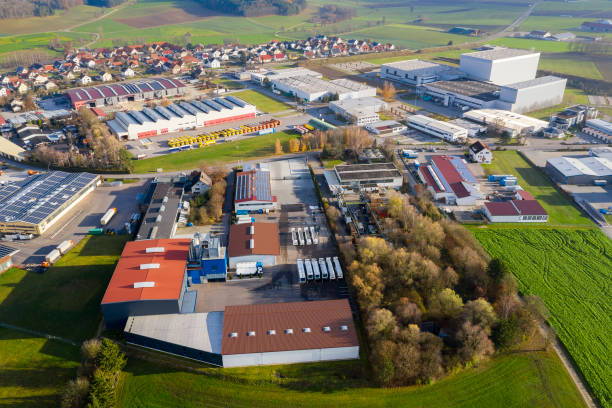Special Economic Zones as Catalysts for Sustainable Development in Africa
Special Economic Zones (SEZs) are fast becoming one of Africa’s most strategic tools for industrial transformation. As countries across the continent seek to diversify their economies, attract foreign investment, and create jobs, SEZs offer a compelling platform to fast-track these goals. Beyond traditional economic benefits, a new generation of SEZs aligns with Africa’s sustainable development agenda, incorporating Environmental, Social, and Governance (ESG) principles into their design and operations. According to the United Nations Conference on Trade and Development, SEZs can contribute to the United Nations Sustainable Development Goals (SDGs) if they embed sustainability into their core frameworks. This can be achieved through resource-efficient technologies, gender-inclusive hiring practices, local SME linkages, and low-carbon infrastructure.
Africa has over 220 SEZs, representing an area of over 140,000 hectares and USD 2.6 trillion in investment. African countries with the highest concentration of SEZs are Kenya, with 61 SEZs; Nigeria (38), Ethiopia (18); and Egypt (10). In Ethiopia, the government has prioritised SEZs as part of its broader industrialisation strategy. In particular, the Hawassa Industrial Park is a flagship model of sustainable industrial development. Built with eco-friendly infrastructure, including a zero-liquid discharge water treatment system, the park has attracted global textile brands and employs over 20,000 workers, 80% of whom are women. This showcases how SEZs can be inclusive, sustainable, and export-oriented.
In Nigeria, the Lekki Free Trade Zone is rapidly evolving into one of West Africa’s most significant industrial hubs. Anchored by the Dangote Refinery and deep-sea port, the zone is expected to boost Nigeria’s refining capacity, reduce fuel imports, and stimulate the petrochemical and manufacturing sectors. With an estimated 200,000 jobs to be created over the next decade, the Lekki Free Trade Zone highlights how SEZs can drive large-scale industrial employment and infrastructure upgrades.
African SEZs offer a means to tackle deep-rooted challenges such as youth unemployment, low manufacturing capacity, bureaucratic challenges and limited regional value addition. This is achieved by concentrating investment, knowledge transfer, and technology adoption in dedicated areas. The Coega SEZ in South Africa exemplifies this approach. With over 50 operational investors in diverse sectors such as the automotive, renewable energy, agro-processing, and logistics sectors, Coega has generated more than 130,000 jobs since its inception. It is also home to one of the most extensive wind turbine manufacturing facilities in the southern hemisphere, aligning with South Africa’s just energy transition. While Coega has thrived under efficient governance, the Musina-Makhado SEZ has been flawed by delays and community opposition, largely due to bureaucratic inertia and a lack of transparency. These challenges underscore the need for SEZs to be backed by capable institutions and clear governance mandates. One of the less-discussed advantages of SEZs is their capacity to bypass complex, inefficient, and often corrupt bureaucratic systems. By creating dedicated zones with special legal and regulatory frameworks, governments can fast-track approvals, offer one-stop investment services, and enforce higher transparency standards.
Kenya’s Dongo Kundu SEZ near the Mombasa port is being positioned as a regional logistics and manufacturing hub. The zone is supported by Japanese financing and public-private partnerships and includes plans for eco-friendly transport corridors and green energy integration. Ghana's Meridian Industrial Park, located within the Tema Free Zones Enclave, has attracted significant foreign investment due to its transparent and efficient governance structures. Strategic partnerships between the government and private investors have been pivotal in promoting investment and economic growth while ensuring accountability and reducing bureaucratic red tape. Governments are also beginning to integrate climate risk into their SEZ planning. For example, Djibouti’s Damerjog Industrial Development Free Zone, part of a larger multi-port strategy, is increasingly factoring in resilience to rising sea levels and supply chain disruptions, ensuring the zone can remain operational under future climate scenarios.
The new frontier for SEZs in Africa is their ability to support sustainable development-delivering not just economic gains, but also environmental protection, social inclusion, and long-term resilience. There is growing evidence that SEZs are designed with sustainability in mind to attract higher-quality investment and offer better outcomes for both investors and host communities. When well-planned and executed, SEZs are powerful catalysts for Africa’s economic and sustainable transformation. As global investors increasingly seek greener and more resilient supply chains, African SEZs must rise to the occasion by embedding sustainability not only as a compliance requirement but also as a competitive advantage. This shift is already underway, from Ethiopia’s eco-industrial parks to Nigeria’s industrial corridors and Rwanda’s efficient, transparent zones. The challenge now is to scale what works, reform what doesn’t, and ensure SEZs remain inclusive, adaptive, and truly transformative for the continent’s future.

References:
To find out more about opportunities in Africa, please get in touch with Lynne Martin.
Lynne Martin
Rebecca Mabika
